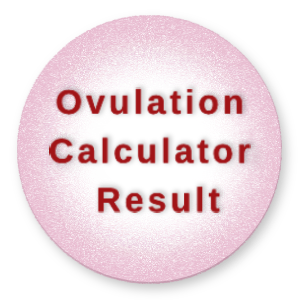Home / Ovulation Calculator Result

Here are the results based on the information you provided:
You next most fertile period is:
![]()
November 14, 1999
to
November 18, 1999
If you conceive within this timeframe, your estimated due date will be:
![]()
August 08, 2000
Methods to Detect Ovulation
In addition to ovulation calculators, there are several other methods that can be used to detect ovulation. Each method has its own advantages and disadvantages, and the best method for you will depend on your individual circumstances, lifestyle, and goals. Here’s a more detailed look at some of these methods:
Ovulation Kits: These home tests detect the LH spike before ovulation. A positive result indicates ovulation in 24-36 hours. They’re accurate but can be costly over time and don’t cover the full menstrual cycle.
Cervical Mucus Method: Tracking cervical mucus changes, becoming clear and stretchy, signals ovulation’s approach. Affordable and doable at home, it requires routine monitoring but can be affected by infections, medications, and more.
Basal Body Temperature (BBT) Method: Monitoring morning body temperature reveals a post-ovulation rise due to progesterone. It confirms ovulation but requires daily tracking and is influenced by factors like sickness and alcohol.
Saliva Ferning Kits: These kits view dried saliva under a microscope to detect a fern-like pattern, indicating increased estrogen levels before ovulation. Cost-effective and reusable, interpreting results can be challenging, influenced by daily activities.
Pelvic Ultrasound: A healthcare provider monitors ovarian follicle development through ultrasound to predict ovulation accurately. Precise but invasive and costly, typically used in fertility treatments.
Ovulation calculators are valuable, but other methods offer options. The best choice depends on your situation, lifestyle, and goals. Consult a the best Gynaecologist at Motherhood Hospital to determine the right method for you.
Types of Ovulation Calculators
There are several types of ovulation calculators available, each with its unique features and levels of accuracy. Understanding the different types can help you choose the one that best suits your needs:
Standard Ovulation Calculator: This kind of ovulation calculator is the most popular. To forecast ovulation, it takes into account the timing of your previous period and the length of your menstrual cycle. For the majority of women with regular cycles, this sort of calculator’s assumption that ovulation takes place in the middle of your cycle is usually accurate. However, this kind of calculator might not offer the most precise forecast for women with erratic periods. It’s crucial to remember that this tool should only be used as a suggestion and not as a reliable ovulation prediction.
Advanced Ovulation Calculator: For a more precise prediction, this calculator considers more variables. These variables may consist of basal body temperature (BBT), cervical mucus thickness, and luteinizing hormone (LH) levels in the urine. The advanced ovulation calculator can offer a more precise and individualized forecast by taking these extra symptoms of ovulation into account. Women who carefully monitor and are confident with the interpretation of their fertility symptoms will find this sort of calculator to be especially helpful.
Fertility Window Calculator: This tool, sometimes referred to as a “perfect ovulation calculator,” not only forecasts ovulation but also pinpoints the whole fertile window. The few days leading up to and following ovulation, when conception is most possible, are known as the fertile window. The fertility calculator can assist women in improving their chances of conception by pinpointing this window. This tool can be very helpful for couples who are trying to get pregnant since it gives a wider window for when conception might occur, raising the likelihood of successful fertilization.
What Is Ovulation Prediction Charting?
Ovulation prediction charting is a comprehensive method of tracking various signs of fertility to predict when ovulation will occur. This method involves monitoring and recording several indicators of fertility, including menstrual cycle length, changes in cervical mucus and basal body temperature, and even mood or other physical symptoms. The data collected is then charted over time to identify patterns and predict future ovulation dates. This method can be somewhat time-consuming and requires a good understanding of the menstrual cycle. However, it can be a valuable tool for women trying to conceive or avoid pregnancy. Moreover, it’s also a great way to learn more about your body and your menstrual cycle, fostering a deeper understanding of your reproductive health
How Does Ovulation Prediction Charting Work?
Cycle Tracking: Monitor menstrual cycle length by recording period start and counting days to the next. Predict ovulation about 14 days before the next period.
Cervical mucus: Track changes in mucus consistency. Clear, stretchy mucus indicates fertility and ovulation readiness.
Basal body temperature (BBT): Measure morning rest temperature. Post-ovulation BBT rise due to progesterone surge.
Chart this data over cycles to predict ovulation for timed intercourse.
Note that factors like stress, illness, and routine changes can affect results. Ovulation Prediction Charting offers insights but isn’t foolproof. Consulting a healthcare provider for fertility concerns is advised.
Motherhood offers you the Pregnancy Ovulation Calculator
This Ovulation Calendar Calculator helps you to work out your fertile days quickly and easily. Like the Motherhood Pregnancy Week Calculator, the ovulation calculator can provide you with accurate, reliable results. A woman can conceive only during a certain part of the month – Just before and during ovulation.
By learning when you ovulate, you can predict when you’re likely to be fertile. This calculator provides approximate ovulation dates and fertile times for women who have regular periods. (Regular periods mean having a period every 21 to 40 days.)
Birth is a natural, physiological process that a mother’s body can perform effectively and a majority of expecting mothers is capable of normal vaginal delivery. With a team of best gynaecologists at Motherhood, we offer an expansive set of services and facilities to all the Moms-to-be. Starting from pre-delivery, during delivery to post delivery and birthing. Many women have a strong feeling of empowerment during labor and a sense of accomplishment afterwards. Despite having to endure pain, there are reports wherein they choose un-medicated birth again next time







